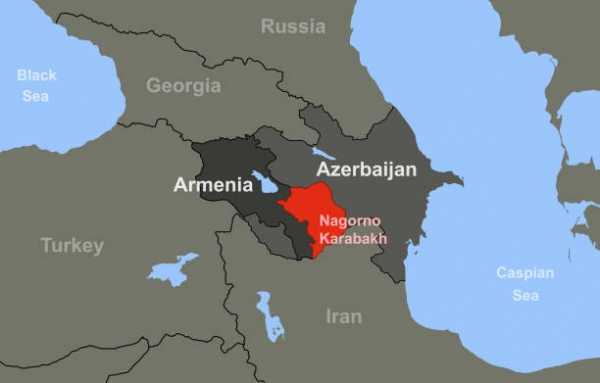Amnesty International is a non-governmental organization (NGO) devoted to the protection of human rights. The organization has carried out field investigations in Nagorno-Karabakh and in the surrounding areas affected by the war to expose violations of the fundamental principles of International Humanitarian Law by the armed forces of Armenia and Azerbaijan that inflicted unnecessary suffering on civilians during the 44-day conflict.
On 27 September 2020, the frozen conflict between Armenia and Azerbaijan over the Nagorno-Karabakh region dated back to 1992, reignited and triggered a new wave of violence which lasted until 9 November 2020, when the parties agreed to a Russian-brokered ceasefire. The conflict claimed the lives of 5,000 soldiers belonging to the armed forces of both countries. In addition to the military losses, both sides have perpetrated indiscriminate attacks on towns away from the frontline, resulting in unnecessary civilian casualties. The parties to the conflict have been accused of serious breaches of International Humanitarian Law by carrying out disproportionate attacks on civilian targets, violating the principles of distinction and proportionality. These attacks were perpetrated using indiscriminate weapons such, including unguided Smerch rockets and artillery shells, and cluster munitions, which are internationally banned under the Convention on Cluster Munition of 2008.
Amnesty International has denounced numerous strikes carried out by the Armenian and Azerbaijani armed forces, deliberately targeting civilian facilities. Other attacks were directed at military targets near civilian houses which were destroyed due to the employment of indiscriminate weapons. In the settlement of Terter, Armenian forces targeted and destroyed 25 apartments and gravely damaged hundreds of administrative buildings. The Azerbaijani armed forces also targeted infrastructures providing public utilities, like the Artsakh Ernergo in Stepanakert, which provided electricity to most of the city and other areas in the region. The organization described these attacks as part of a strategy aimed at intimidating the other faction in the conflict According to the data provided by the NGO, the Armenian forces carried out eight strikes on the Azerbaijani towns of Ganja, Barda, Gashalti, and Qarayusufli, killing 72 civilians and destroying many civilian homes and facilities. Besides being indiscriminate weapons, cluster munitions are of particular concern given the high number of cluster bombs that fail to explode. The organization has, indeed, reported that, in the aftermath of the attacks, between 5 to 20 percent of the bomblets remain unexploded, posing a threat to civilian lives even after the ceasing of hostilities. On the Azerbaijani side, the armed forces carried out nine strikes on the towns of Stepanakert, Martuni, and Martakert, in Nagorno-Karabakh, and one on the Armenian town of Davit Bek, causing the death of 11 civilians. The de facto forces of Nagorno-Karabakh have reported that the overall number of Armenian civilian casualties during the conflict would amount to 52. Among the civilian victims, the NGO has reported that the attacks produced numerous child casualties. The Ganja bombing claimed the life of an 11-year old boy, of a ten-month-old girl and of two girls aged 14 and six, while a seven-year old girl was killed by the Barda attack while playing in her house garden.
In concluding the report, Amnesty International has formulated a series of recommendations to Armenia and Azerbaijan for the protection of civilians in the conflict zone. The organization appealed to both parties to: commit to their obligations under international law and become parties to the Convention on Cluster Munitions; to cooperate in sharing information about the locations where explosive weapons were employed, in order to localize the unexploded ordnance and prevent a further increase in the number of civilian casualties; to create a joint fund for compensation to support the displaced who have lost their households; to provide compensation to the relatives of the victims of their indiscriminate warfare and to create a mechanism for the monitoring of human rights in the area, facilitating the involvement of relevant international organization.
To know more, please visit:
https://reliefweb.int/sites/reliefweb.int/files/resources/EUR5535022021ENGLISH.PDF
Author: Carla Leonetti; Editor: Francesca Mencuccini




